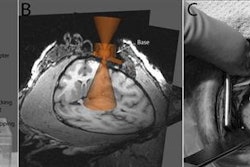"These metrics of body composition are believed to be associated with the risk of developing diabetes and/or comorbidities and complications," wrote Olof Dahlqvist Leinhard, PhD, from Linköping University, in an email to AuntMinnie.com. "The study provides a deeper understanding of the clinical presentation of people with or at high risk of developing diabetes mellitus."
Leinhard and colleagues reviewed the first 3,900 subjects in the U.K. Biobank Imaging Study to compare people with diabetes mellitus to those without and identify normative values for body composition and ectopic fat storage. Subjects underwent 1.5-tesla MRI scans using a Dixon imaging protocol from the neck to knee and a 10-point Dixon single-axial slice protocol positioned in the liver.
The results led the researchers to conclude that diabetes mellitus is strongly associated with high visceral fat, liver fat, and total abdominal fat, as well as a low muscle ratio.
"Most methods that measure body fat, such as hydrostatic weighing and air displacement plethysmography, are not able to differentiate between ectopic fat compartments or provide accurate, precise quantification of visceral fat," Leinhard said. "MRI, as well as being the gold standard in 3D volumetric imaging of adipose tissue and muscle tissue, provides accurate and precise measures of all three biomarkers -- visceral fat, liver fat, and muscle fat -- and all through one six-minute scan."
The next step in the research is to define and validate predictive risk values and use these risk profiles to determine the best personalized treatment regimens, he said.
The investigation is also part of a larger study in which 100,000 subjects from U.K. Biobank will be scanned to quantify values for visceral adipose tissue volume, total abdominal adipose tissue volume, total lean thigh muscle volume, and liver proton density fat fraction.



















